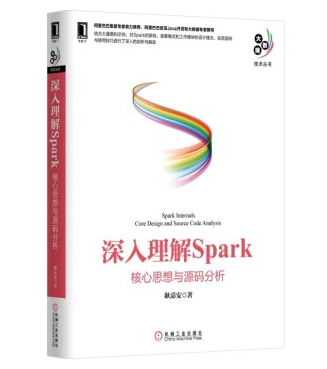Spring与Akka的集成
概述
近年来随着Spark的火热,Spark本身使用的开发语言Scala、用到的分布式内存文件系统Tachyon(现已更名为Alluxio)以及基于Actor并发编程模型的Akka都引起了大家的注意。了解过Akka或者Actor的人应该知道,这的确是一个很不错的框架,按照Akka官网的描述——使用Akka使得构建强有力的并发与分布式应用将更加容易。由于历史原因,很多Web系统在开发分布式服务时首先会选择RMI(Remote Method Invoke ,远程方法调用)、RPC(Remote Procedure Call Protocol,远程过程调用)或者使用JMS(Java Messaging Service,Java消息服务)。
但是使用RMI只能使用java语言,而且开发、执行效率都不高;RPC框架虽然可以通过匹配方法签名的方式比RMI更灵活,但是其存在调用超时、调用丢失等缺点;JMS方式虽然可以通过At Least Delivery Once、消息持久化等机制保证消息不会丢失,但是只能作为一种跨服务的生产者、消费者编程模型使用。Akka不但处理了以上问题,而且还可以使用Actor作为并发编程模型,减少java多线程编程的阻塞、调度、上下文开销甚至死锁等问题。此外,Akka还提供了集群Sharding、流处理等功能的支持,更易于实现有限状态自动机等功能。所以有心的开发者势必会关心如何在最常见的Java系统中使用它,如何与Spring集成?
本文参考Akka官方使用文档,根据自身的经验和理解,提供Akka与Spring集成的方案。本文不说明Spring框架的具体使用,并从Spring已经配置完备的情况开始叙述。
Actor系统——ActorSystem
什么是ActorSystem?根据Akka官网的描述——ActorSystem是一个重量级的结构体,可以用于分配1到N个线程,所以每个应用都需要创建一个ActorSystem。通常而言,使用以下代码来创建ActorSystem。
ActorSystem system = ActorSystem.create("Hello");
不过对于接入Spring而言,由IOC(Inversion of Control,控制反转)方式会更接地气,你可以这样:
<!-- AKKA System Setup --> <bean id="actorSystem" class="akka.actor.ActorSystem" factory-method="create" destroy-method="shutdown" scope="singleton"> <constructor-arg value="helloAkkaSystem"/> </bean>
然后在你需要的地方依赖注入即可。
Actor编程模型
有关Actor编程模型的具体介绍可以看我的另一篇博文——《Spark如何使用Akka实现进程、节点通信的简明介绍》,里面有更多的介绍。需要补充的是,在最新的Scala官方网站上已经决定废弃Scala自身的Actor编程模型,转而全面拥抱Akka提供的Actor编程模型。
我们可以通过以下代码(代码片段借用了Akka官网的例子)创建一个简单的Actor例子。
Greeter是代表问候者的Actor:
public class Greeter extends UntypedActor { public static enum Msg { GREET, DONE; } @Override public void onReceive(Object msg) { if (msg == Msg.GREET) { System.out.println("Hello World!"); getSender().tell(Msg.DONE, getSelf()); } else unhandled(msg); } }
一般情况下我们的Actor都需要继承自UntypedActor,并实现其onReceive方法。onReceive用于接收消息,你可以在其中实现对消息的匹配并做不同的处理。
HelloWorld是用于向Greeter发送问候消息的访客:
public class HelloWorld extends UntypedActor { @Override public void preStart() { // create the greeter actor final ActorRef greeter = getContext().actorOf(Props.create(Greeter.class), "greeter"); // tell it to perform the greeting greeter.tell(Greeter.Msg.GREET, getSelf()); } @Override public void onReceive(Object msg) { if (msg == Greeter.Msg.DONE) { // when the greeter is done, stop this actor and with it the application getContext().stop(getSelf()); } else unhandled(msg); } }
有了Actor之后,我们可以这样使用它:
ActorRef a = system.actorOf(Props.create(HelloWorld.class), "helloWorld");
在HelloWorld的preStart实现中,获取了Greeter的ActorRef(Actor的引用)并向Greeter发送了问候的消息,Greeter收到问候消息后,会先打印Hello World!,然后向HelloWorld回复完成的消息,HelloWorld得知Greeter完成了向世界问好这个伟大的任务后,就结束了自己的生命。HelloWorld的例子用编程API的方式告诉了我们如何使用Actor及发送、接收消息。为了便于描述与Spring的集成,下面再介绍一个例子。
CountingActor(代码主体借用自Akka官网)是用于计数的Actor,见代码清单1所示。
代码清单1
@Named("CountingActor")
@Scope("prototype")
public class CountingActor extends UntypedActor {
public static class Count {
}
public static class Get {
}
// the service that will be automatically injected
@Resource
private CountingService countingService;
private int count = 0;
@Override
public void onReceive(Object message) throws Exception {
if (message instanceof Count) {
count = countingService.increment(count);
} else if (message instanceof Get) {
getSender().tell(count, getSelf());
} else {
unhandled(message);
}
}
}
public interface CountingService { /** * 计数 * @param count * @return */ int increment(int count); }
@Service("countingService")
public class CountingServiceImpl implements CountingService {
private static Logger logger = LoggerFactory.getLogger(CountingServiceImpl.class);
/*
* (non-Javadoc)
*
* @see com.elong.sentosa.metadata.service.CountingService#increment(int)
*/
@Override
public int increment(int count) {
logger.info("increase " + count + "by 1.");
return count + 1;
}
}
akka.actor.ActorInitializationException: You cannot create an instance of [com.elong.metadata.akka.actor.CountingActor] explicitly using the constructor (new). You have to use one of the 'actorOf' factory methods to create a new actor. See the documentation.
如果我们不能使用@Service或者@Component,也不能使用XML配置的方式使用(与注解一个道理),那么我们如何使用CountingActor提供的服务呢?
IndirectActorProducer接口
IndirectActorProducer是Akka提供的Actor生成接口,从其名字我们知道Akka给我们指出了另一条道路——石头大了绕着走!通过实现IndirectActorProducer接口我们可以定制一些Actor的生成方式,与Spring集成可以这样实现它,见代码清单2所示。
代码清单2
public class SpringActorProducer implements IndirectActorProducer { private final ApplicationContext applicationContext; private final String actorBeanName; private final Object[] args; public SpringActorProducer(ApplicationContext applicationContext, String actorBeanName, Object ... args) { this.applicationContext = applicationContext; this.actorBeanName = actorBeanName; this.args = args; } public Actor produce() { return (Actor) applicationContext.getBean(actorBeanName, args); } public Class<? extends Actor> actorClass() { return (Class<? extends Actor>) applicationContext.getType(actorBeanName); } }
SpringActorProducer的实现主要借鉴了Akka官方文档,我这里对其作了一些扩展以便于支持构造器带有多个参数的情况。从其实现看到实际是利用了ApplicationContext提供的getBean方式实例化Actor。
这里还有两个问题:一、ApplicationContext如何获取和设置?二、如何使用SpringActorProducer生成Spring需要的Actor实例?
对于第一个问题,我们可以通过封装SpringActorProducer并实现ApplicationContextAware接口的方式获取ApplicationContext;对于第二个问题,我们知道Akka中的所有Actor实例都是以Props作为配置参数开始的,这里以SpringActorProducer为代理生成我们需要的Actor的Props。
SpringExt实现了以上思路,见代码清单3所示。
代码清单3
@Component("springExt")
public class SpringExt implements Extension, ApplicationContextAware {
private ApplicationContext applicationContext;
/**
* Create a Props for the specified actorBeanName using the
* SpringActorProducer class.
*
* @param actorBeanName
* The name of the actor bean to create Props for
* @return a Props that will create the named actor bean using Spring
*/
public Props props(String actorBeanName, Object ... args) {
return Props.create(SpringActorProducer.class, applicationContext, actorBeanName, args);
}
public void setApplicationContext(ApplicationContext applicationContext) throws BeansException {
this.applicationContext = applicationContext;
}
}
应用例子
经过了以上的铺垫,现在你可以使用创建好的CountingActor了,首先你需要在你的业务类中注入ActorSystem和SpringExt。
@Autowired private ActorSystem actorSystem; @Autowired private SpringExt springExt;
然后我们使用CountingActor进行计数,代码如下:
ActorRef counter = actorSystem.actorOf(springExt.props("CountingActor"), "counter");
// Create the "actor-in-a-box"
final Inbox inbox = Inbox.create(system);
// tell it to count three times
inbox.send(counter, new Count());
inbox.send(counter, new Count());
inbox.send(counter, new Count());
// print the result
FiniteDuration duration = FiniteDuration.create(3, TimeUnit.SECONDS);
Future<Object> result = ask(counter, new Get(), Timeout.durationToTimeout(duration));
try {
System.out.println("Got back " + Await.result(result, duration));
} catch (Exception e) {
System.err.println("Failed getting result: " + e.getMessage());
throw e;
}
输出结果为:
Got back 3
总结
本文只是最简单的Akka集成Spring的例子,Akka的remote、cluster、persistence、router等机制都可以应用。







【推荐】国内首个AI IDE,深度理解中文开发场景,立即下载体验Trae
【推荐】编程新体验,更懂你的AI,立即体验豆包MarsCode编程助手
【推荐】抖音旗下AI助手豆包,你的智能百科全书,全免费不限次数
【推荐】轻量又高性能的 SSH 工具 IShell:AI 加持,快人一步
· go语言实现终端里的倒计时
· 如何编写易于单元测试的代码
· 10年+ .NET Coder 心语,封装的思维:从隐藏、稳定开始理解其本质意义
· .NET Core 中如何实现缓存的预热?
· 从 HTTP 原因短语缺失研究 HTTP/2 和 HTTP/3 的设计差异
· 周边上新:园子的第一款马克杯温暖上架
· Open-Sora 2.0 重磅开源!
· 分享 3 个 .NET 开源的文件压缩处理库,助力快速实现文件压缩解压功能!
· Ollama——大语言模型本地部署的极速利器
· DeepSeek如何颠覆传统软件测试?测试工程师会被淘汰吗?